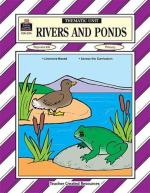|
This section contains 2,713 words (approx. 10 pages at 300 words per page) |

|
RIVERS. Among the Native American Yurok people, who live along the Yurok River in northern California, orientation in the world was not provided by the four cardinal directions, but by the river itself: upstream and downstream. To these salmon fishermen, dependent upon the river for livelihood, the river alone was the primary axis of orientation.
In ancient times too, there were great civilizations whose life was so oriented toward one major river that they have come to be called river civilizations: Mesopotamia along the Tigris and Euphrates, Egypt along the Nile, the Indus Valley civilization along the Indus. In all these it is not surprising that the river itself should function as a fundamental means of world orientation and become associated with yearly inundation, fertility, and with life in its fullest sense.
Ancient Mesopotamian civilization made a distinction between Tiamat, the great mother of the salt waters of...
|
This section contains 2,713 words (approx. 10 pages at 300 words per page) |

|


